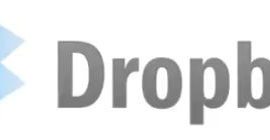

This article is an excerpt from the Shortform book guide to "Who" by Geoff Smart and Randy Street. Shortform has the world's best summaries and analyses of books you should be reading.
Like this article? Sign up for a free trial here.
Are you looking to fill a new position at your company? What are the four types of interviews you should conduct?
A crucial step in the hiring process comparing the candidates to your hiring rubric to determine if they fill a particular role. This is done by interviewing them about their past roles and what they bring to the table.
Here’s how to interview candidates to find the right one for the job.
The Interview Process
You want candidates who have a 90% likelihood of completing all the role’s responsibilities, which you measure by tracking how many of the specifications on your hiring rubric they meet. Eliminate anyone who falls below this benchmark so you don’t waste time pursuing unfit candidates.
Many hiring managers don’t spend enough time with their candidates to determine if they can fill a role. In Who, Geoff Smart and Randy Street say the solution is an in-depth interview process that analyzes candidates’ performances throughout their careers. Learning how to interview candidates and actually performing the process is time-consuming, the authors acknowledge. However, you’ll ultimately save time, effort, and money by not hiring unfit candidates who’ll have to be replaced.
(Shortform note: Some business experts say making short-term sacrifices to gain long-term benefits is important to becoming exponentially successful. These sacrifices let you form a strong foundation that you can later build greater success on. For instance, taking extra time to hire strong candidates strengthens your employee base. Whereas mediocre employees might make only gradual improvements, strong employees can each use their unique, specified skills to improve the company right away. With every strong employee you hire, the company improves further, making it successful at an increasingly rapid rate.)
The authors break this process into four types of interviews, conducted in the following order:
Type 1: The evaluation interview. The purpose of this interview is to quickly eliminate candidates who don’t meet the expectations outlined in your hiring rubric. It’s usually conducted over the phone. Most candidates are eliminated during this step; the authors say only three should remain.
(Shortform note: While other hiring experts don’t specify that only three people should pass the evaluation interview, they do indicate that this stage should have one of the lowest yield ratios in your hiring process: the lowest percentage of candidates that successfully pass to the next hiring stage. Low yield ratios indicate that your hiring process efficiently eliminates poor candidates. You can lower your ratio by making your hiring criteria more demanding. For example, if you used to pass skilled candidates who had proven experience in meeting half of the role’s goals, you may now only pass those with experience in meeting three-quarters of those goals.)
Type 2: The sequential interview. In this interview, your goal is to identify candidates’ behavioral tendencies so you can predict how they’ll likely behave in the future. You do this by discussing each job the candidates have held sequentially, which we’ll explore in more detail in the following section.
Type 3: The targeted interview. The purpose of this interview is to discuss any specific goals or qualities that weren’t covered in the sequential interview.
Type 4: The performance interview. In this final interview, your goal is to get outside perspectives on candidates’ past performances from their previous superiors and peers.
(Shortform note: Another interviewing method you may want to try is getting the opinions of a candidate’s future superiors and peers. Some small-business experts suggest ensuring all of your existing employees agree that a candidate would be a good fit before offering them a job. This lets you use your team’s different perspectives and insights to ensure the candidate is a good choice, increases team loyalty, and makes chosen candidates feel welcomed, as they know the whole company approves of them.)
| Targeted vs. Talent Interviews: How to Identify Specific Qualities Gallup Press doesn’t discuss targeted interviews in First, Break All the Rules. However, they do suggest you conduct a talent interview, which arguably works in the opposite way of a targeted interview. In a targeted interview, you confirm the candidate has qualities you’ve already determined will help them complete the role’s goals and purpose. In a talent interview, on the other hand, you identify traits and abilities they’re naturally inclined to and then determine if those qualities will help them fulfill the role. For example, in a targeted interview, you might decide creativity is important and then see if the candidate has that quality by asking them to share examples of times they showed creativity. In contrast, in a talent interview, you might ask candidates what their best traits are and then judge whether the traits they list would help them fulfill the role’s purpose. This approach stops candidates from putting on an act: If you’re looking for specific talents and abilities, candidates can recognize that and project those qualities. If you’re just trying to identify whatever’s there, they won’t know what to project, giving you the chance to identify their real qualities. |
Identifying Behavioral Tendencies Through a Sequential Interview
As mentioned above, the sequential interview lets you identify a candidate’s behavioral tendencies. Understanding how a candidate has behaved in the past helps you predict how they may behave in the future and whether that behavior will help them fulfill the role.
For example, say you own a software company. You have a candidate who’s created multiple popular apps for each of their past employers, but who hasn’t performed well in roles that required them to pitch their projects to investors. This behavioral tendency tells you that the candidate is innovative, has a good understanding of what customers want, and is bad at explaining their work to people who aren’t software engineers. If you’re hiring for a purely developmental role, they’re a good candidate, but if you need someone who can communicate with non-experts, they’re not a good fit.
To identify a candidate’s behavioral tendencies, the authors recommend discussing each job the candidate has held in the last 15 years in sequential order. Analyzing this long period of time lets you identify the candidate’s behaviors that remain the same over the years and are likely to continue if you hire them. Also, discussing the candidate’s history sequentially is easier for both of you: The candidate can share their experiences in a simple narrative order, rather than trying to remember things out of order, and you can see how their behavioral tendencies and career progressed, which helps you understand their likely future trajectory.

———End of Preview———
Like what you just read? Read the rest of the world's best book summary and analysis of Geoff Smart and Randy Street's "Who" at Shortform.
Here's what you'll find in our full Who summary:
- Why the key to business success is having an effective hiring process
- The 4-step hiring process you should be following
- The two behavioral tendencies to look out for in candidates






